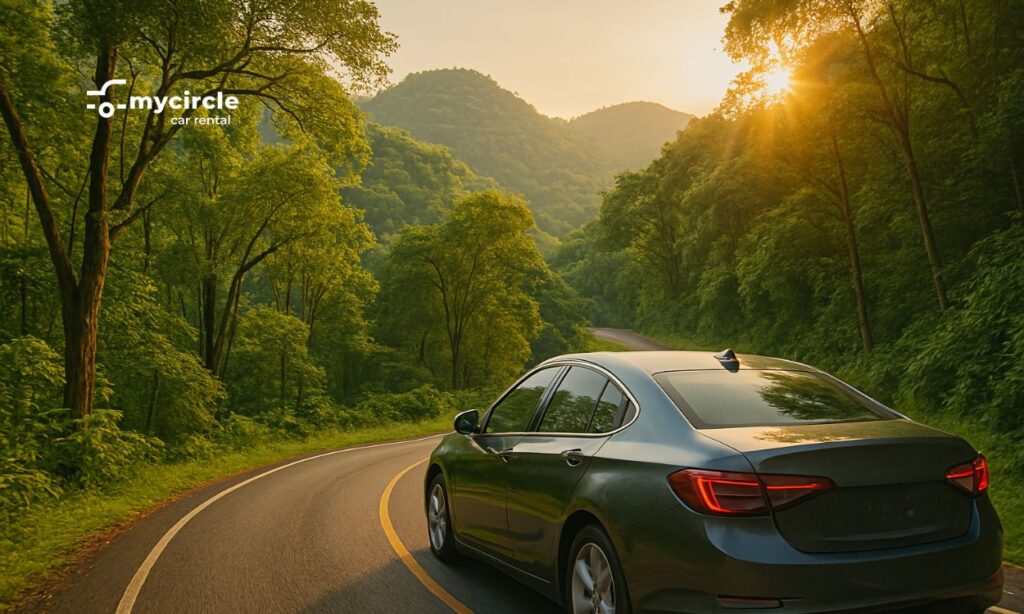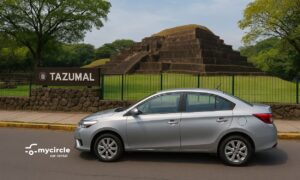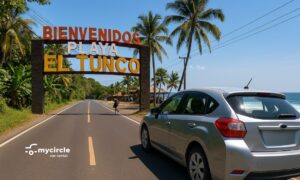Road trips to natural destinations are one of the best ways to reconnect with the outdoors. If you’re looking for a complete experience in western El Salvador, this guide to El Imposible National Park by car: scenic route, ecotourism, and biodiversity is for you.
El Imposible is one of El Salvador’s most iconic national parks. Its name evokes mystery, but it actually offers accessible roads, stunning biodiversity, panoramic views, and a natural haven for outdoor lovers.
Where is El Imposible National Park located?
The park is in the department of Ahuachapán, specifically in the municipality of Tacuba. It spans over 5,000 hectares of tropical mountain forest, home to one of the country’s richest concentrations of flora and fauna.
Want to explore alternate routes and plan your visit with local insight? Find personalized recommendations and lodging options on My Circle SV.
How to get to El Imposible National Park by car
Route from San Salvador:
- Take the Pan-American Highway westbound.
- Upon reaching Ahuachapán, head toward Ataco and then Tacuba.
- From Tacuba, follow signs to the park. The final stretch is unpaved—4×4 recommended.
Estimated travel time:
- Between 3 and 4 hours, depending on traffic and road conditions.
Travel tips:
- Fill your gas tank in Ahuachapán.
- Use Waze or Google Maps up to Tacuba; from there, follow local signs.
- Bring water, snacks, and a light jacket.
Ecotourism activities in El Imposible
1. Guided hiking
The park has several trails, including Los Enganches, El Mulo, and Piedra Sellada. Some require a local guide for safety and ecological context.
2. Birdwatching
El Imposible is a paradise for birdwatchers, home to species like the emerald toucanet, king vulture, and over 270 identified birds.
3. Waterfalls and natural pools
Some park areas feature small rivers, bathing spots, and accessible waterfalls via hiking trails.
4. Nature photography
With forests, slopes, butterflies, and birds, it’s the perfect setting for unique wildlife photography.
5. Eco-camping
There are designated areas for camping within the park—reservation required and eco-guidelines must be followed.
Want to book a guide or eco-friendly tour? Find responsible travel experiences on My Circle SV, with filters by difficulty level and duration.
Flora and fauna of El Imposible National Park
- Mammals: ocelots, white-tailed deer, coyotes, and pacas.
- Birds: emerald toucanet, owls, hawks, orioles.
- Reptiles & amphibians: non-venomous snakes, frogs, salamanders.
- Plants: centuries-old trees, bromeliads, orchids, tree ferns.
The park is part of the Mesoamerican Biological Corridor, ensuring its rich biodiversity and importance for regional conservation.
What to bring when visiting El Imposible by car
- Hiking boots or non-slip shoes
- Small backpack
- Comfortable, quick-dry clothing
- Raincoat (if visiting in wet season)
- Insect repellent
- Camera or binoculars
- Drinking water and snacks
- Trash bag
General safety recommendations
- Use only marked trails.
- Inform park rangers of your route.
- Hire a guide if you’re unfamiliar with the park.
- Avoid lighting fires or leaving waste.
- Respect wildlife—do not touch or feed animals.
Where to stay near the park
1. Eco-hostels in Tacuba
Offer basic rooms, homemade meals, and integrated tours.
2. Eco-lodges near the park
Some include viewpoints, solar power, and connections to local guides.
3. Campsites inside the park
Only in authorized zones, with prior reservation.
Find options filtered by budget, type of experience, and proximity to the park on My Circle SV.
What to eat in the area
- Typical Salvadoran food: pupusas, tamales, soups.
- Local coffee: nearby areas like Ataco and Apaneca grow high-quality beans.
- Farmer-style breakfasts: great for fueling up before hiking.
Find restaurant reviews and trusted local diners on My Circle SV.
Best time to visit El Imposible
- Dry season (November to April): Best for hiking and easier road access.
- Rainy season (May to October): Lusher vegetation, but trails may be slippery.
Both seasons offer unique experiences—just pack accordingly.
What else to visit on your way to El Imposible
1. Ruta de las Flores
Combine your visit with towns like Ataco, Juayúa, and Apaneca.
2. El Imposible–Barra de Santiago Wildlife Refuge
For a complementary coastal experience.
3. Ahuachapán
Visit historical plazas, churches, and local cafés.
Plan a full route with maps, local tips, and trusted lodging on My Circle SV, your companion for conscious travel in El Salvador.
Exploring El Imposible National Park by car opens the door to one of the country’s greatest natural treasures. With a scenic route, authentic ecotourism, and rich biodiversity, this trip becomes a transformative experience for every nature lover.
Plan your visit, find lodging, and get ready to connect with the greenest side of El Salvador on My Circle SV.


